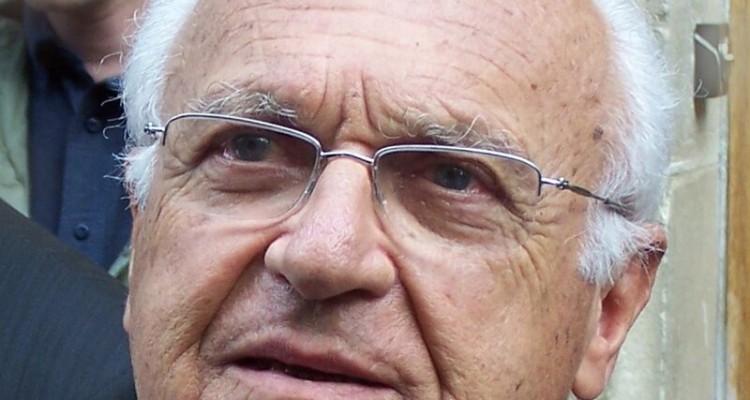What ideological resources do supporters of the binational solution draw on, at a time when cohabitation between Israelis and Palestinians seems more compromised than ever? Denis Charbit offers us his critical review of Shlomo Sand’s latest book, Two people for one State? Rereading the history of Zionism (Seuil)[1]. Born from within Zionist thought, Charbit nevertheless warns us against the deception of turning this perspective against the Zionist project as such[2].
![]()
Shlomo Sand’s latest book has just been published in French. Ignore the iconography on the cover – a Jewish settlement perched on a hill, with barbed wire in the foreground – this is not just another book about the Israeli occupation since 1967. At most, the image is indicative of the cause-and-effect relationship between the perceived irreversibility of the settlements, blocking the road to a two-state solution, and the resurgence of the binational idea in public debate.
The title, in its entirety, deserves attention: Two people for one state? Just as it used to be said that the most important word in the formula “Jewish and democratic state” is the coordinating conjunction “and”, it’s the question mark that matters most here, in my view.
If this is a deliberate choice on the part of the author, and not a suggestion from the publisher, then Shlomo Sand is showing a degree of prudence that is hardly known to him: hasn’t he always appeared in the public arena camped on his certainties? Hasn’t he been telling us for the past fifteen years that the Jewish people is invented, that the Land of Israel is invented and that it’s better to stop being Jewish to atone for the chaos that Zionism has brought about in this peaceful land of Palestine and in the Diaspora?
Doubt is not just in the title. Sand persists, multiplying the precautions in both the foreword and the conclusion of the book. He would have liked binationalism to be the constitutional model towards which the two peoples are moving; however, given the current situation – and let’s not forget that the book was written before October 7 – he hopes at most that what appears today to be a utopian whim of the pleasure principle will make its way, and become tomorrow, or rather the day after tomorrow, or even in messianic times (no irony intended), the principle of reality. He is aware of the theoretical, and above all practical, fragility of the model.

Shlomo Sand is not, it is true, a political scientist. He does not seek to examine the viability of the model, to show how it might work under certain conditions, to indicate the constitutional arrangements that might serve as a guarantee for both parties, or to draw lessons from a comparative study of countries that have adopted the same or similar formula. He is a historian, and his first inclination is to point out that the binational idea is not a recent idea that has arisen among anti-Zionists who have swapped the destruction of Israel for a cleaner formula that has the merit, at least, of admitting the existence of a Jewish nation in the absence of recognizing a Jewish state; the binational idea not only has a history, a genealogy, the very one recounted by Shlomo Sand in his book. It is above all a Jewish invention, and even more so, a Zionist idea. This is how we should read and understand the subtitle of the book, which is even more innovative than the title: “rereading the history of Zionism” (but which does not appear in the original Hebrew version). Sand does not write “to rehabilitate”. In fact, after having said as much as he could about Zionism in the singular, having long considered that Zionists are, all tendencies taken together, still holding Zionism to be a colonial movement which has never ceased to drive out the natives through political, military, economic, demographic and eugenic practices, here Shlomo Sand is letting go: He is coming to terms with the fact that Zionism is not to be taken as a whole; that there were, within it, tendencies that deserve respect and thinkers who were remarkable. Having spent years engaged in the Sisyphean task of begging people to stop looking at Zionism with the axe of Manichaeism – Zionism is neither good incarnate nor absolute evil – having shown that there are indeed Zionisms and not just one, and having read the author’s previous works, so quick to polemicize, his latest book could almost be seen as a work of repentance. If the pre-1948 Yishuv[3] and the State of Israel that followed remain, for him, the reincarnation of Sodom and Gomorrah, at least this time he has found ten righteous points to justify not sending Zionism to the hell of history. Let’s not anticipate the end: Sand, like any far-left man worthy of the name, fires off a few scathing and contemptuous formulas at left-wing Zionists, reserving his praise, well-deserved though it is, for Jabotinsky’s frankness and Begin’s liberalism. Left-wing Zionists will have to wait for another book to receive his praise.
The book traces a century of Zionist thought and profiles a dozen of these righteous men, including Yitzhak Epstein, Ahad Ha’am, Rabi Benjamin, Martin Buber, Gershom Scholem, Shmuel Hugo Bergman, Hans Kohn, Arthur Ruppin, Leon Magnes and, after 1948, Ury Avnery, Meron Benvenisti and Abraham B. Yehoshua, the latter two having, in the evening of their lives, embraced binationalism out of spite. To this substantial list, he also adds a number of diaspora Jewish intellectuals, such as Hannah Arendt, Tony Judt and the dynamic young Peter Beinart. Sand describes a Zionist trend that has built up, stratum by stratum, from the turn of the century to the present day, from diverse theoretical and spiritual horizons: religious existentialism, political realism, anti-statist Marxism, orientalism and pacifism. All these voices urged their contemporaries to take the growing Arab hostility seriously. As Zionists, their categorical imperative was to propose a revision of Jewish policy in Palestine in the light of this initial Arab rejection, in order to lay the groundwork for a possible conciliation, whatever the cost. In this sense, they were hardly the sweet dreamers we like to caricature them as (and even today, this is how the death of so many of their heirs in the massacre of October 7 is instrumentalized on the right). In many respects, Buber and Jabotinsky, ethical Zionism and nationalist Zionism, started from the same premise: the natives are attached to their land, to their dead, to their customs: they too have a historical memory, a political conscience and national aspirations to self-determination; but once we have moved from diagnosis to remedy, we can see the abyss that separates them: for Jabotinsky, Arab rejection was an irrefutable fact; for Buber, a fact that could become circumstantial if the Zionist leadership met the Arab challenge not by denial, still less by confrontation on a future battlefield, but by establishing an honorable compromise involving a recasting of the aims of state Zionism. Instead of patronizing the native, or at worst treating him as an enemy, it was up to the newcomers of yesteryear, the Jews in Palestine, to seek ways of transforming a divisive conflict into a common destiny that would bring people together.
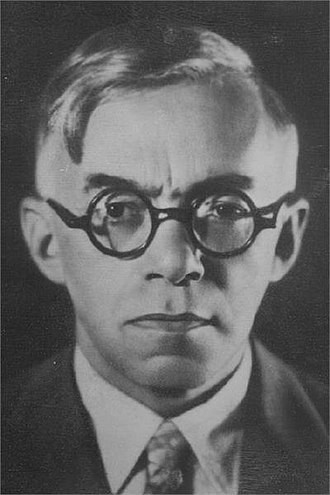
Jabotinsky thought that all that was needed to protect itself was to erect an “iron wall”. Buber, on the other hand, felt that by making Arab rejection an axiom, the Yishuv exempted itself from reflecting on its share of responsibility for this rejection, which it had nurtured through its fait accompli practices and unilateral objectives. Buber recognized that Zionism could appear to the Arabs of Palestine as a real and objective threat to their interests, their land and their demographic supremacy, and that it was incumbent on them to take this into account when setting limits between what was legitimate in the development of the Jewish community in Palestine and what was less so. For Jabotinsky, any concession was a lost cause, a slippery slope to the abdication of the whole enterprise. Buber’s Zionism, on the other hand, was eminently voluntarist: since Zionism had been conceived without anticipating the effect it would have, now that it had passed from the sky of ideas to the ground of reality, it was important to repair it, before it was too late, before the war added its surge of violence, death and irreparable wounds.
Sand therefore looks back at these emblematic figures of ethical and humanist Zionism, at the associations and journals in which they developed their convictions and tried to bend the dominant tendency in the Yishuv, which, sceptical about the success of these attempts at conciliation, foresaw the inevitable confrontation or stirred it up. The controversy became more heated as the inflexible intransigence of the Mufti of Jerusalem and leader of Palestinian nationalism, Haj Amin el Husseini, grew. All the more so as Buber, Bergman and the others were prepared to compromise on the principle of free immigration, on the objective of building a Jewish majority and on the goal of creating a unitary state, without ever ceasing to declare themselves Zionists and faithful to the ideal that had brought them to Palestine.
Contrary to what Shlomo Sand writes, it was not Mapai’s hegemony that completed binationalism. The explanation is too simple and simplistic. It was not the unequal balance of power between the two movements that was decisive, even if one was a think-tank and the other a mass party. Sand seems to forget that federal solutions and plans for the cantonization of Palestine were simultaneously advocated within the Zionist left. It was only after the Hebron massacre of 1929, and especially after the 1936 revolt, that Mapai, under Ben Gurion’s leadership, gave up the previously envisaged idea of sharing sovereignty, bowing to the need to share the territory. The controversy between Brit Shalom and Mapai never presented the crippling character postulated by Sand. On a methodological level, an eloquent quote from a protagonist is not equivalent to a demonstration.
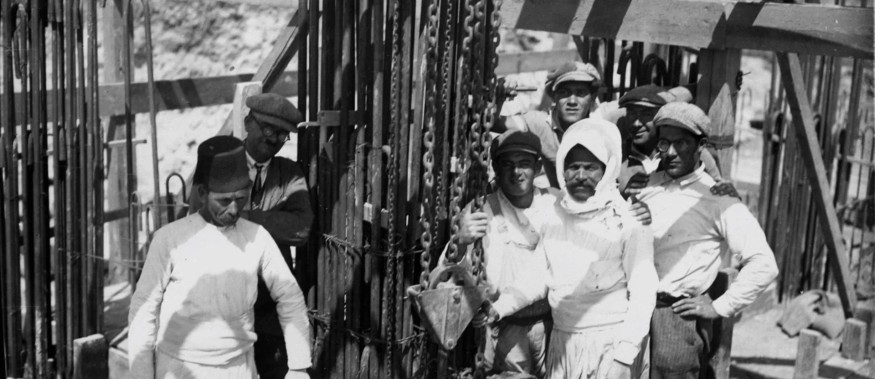
Two forces, both external to the Yishuv, undermined binationalism. First, the absence of a similar trend on the Arab side. The fate of any binational solution depended, then as now, on forces on both sides capable of organizing themselves politically to demand it. On the Zionist side, these forces have never had such an impact, and on the Palestinian side, they have been liquidated in blood. But another factor, external to Palestine, was to bring down and bury the binational project. What had motivated the Zionist commitment of Ahad Ha’am and Martin Buber was the conviction that the Yishuv would be the site of a linguistic, cultural and spiritual renaissance and social creativity for Judaism. However, from the 1930s onwards, the antisemitism wave reversed priorities, drastically accelerating Jewish emigration to Palestine. Zionist binationalism collapsed in the face of this unexpected mass influx. The land that had saved tens of thousands of people fleeing Nazi Germany before the war became, after the war, the indispensable refuge state for hundreds of thousands of survivors. And if Israel’s raison d’être, and necessity, was to bring together refugees and stateless people in a territory destined to be smaller than that of Mandate Palestine, then it became objectively desirable for Ben Gurion that the Arab population should be as small as possible, which explains his decision to deny Palestinians who left or were expelled between November 1947 and July 1948 the right to return to their homes during the first truce. History is tragic. In other words, between Jewish rebirth and refugee state, history has delivered its verdict, before which the supporters of the bi-national state eventually bowed. What would halting Jewish immigration after the war have meant, if not cutting off the branch on which Zionism found its moral legitimacy in the eyes of the world, and of the Jews themselves? As for the Palestinians, while a state for two peoples was objectively preferable to partition, they were not credible in considering this first solution in extremis, to which they had preferred a verdict by force of arms.

Buber and his followers infused Zionist thought with that which is most remarkable, most luminous, most creative, most sensitive: the rebirth of a Judaism converging with humanism, utopia, anarchy, pacifism and a new form of social life, of which the Kibbutz has long been the paragon. Admittedly, you can’t build a state with Buber and Ahad Ha’am, but no state makes sense – and Israel even less so – without a vigilance similar to theirs. They were consciences in the noblest and most sacred sense of the word. Julien Benda would have said “clerics”, those who never betray the values of the spirit. They hold them up to their contemporaries like a mirror, so that they never lose sight of the gap between what they are and what they should be, even if they prefer to look the other way. These clerics were, in their own way, a moment in human consciousness, beacons shining a light on sinking ships so that they might find their way back to the right path. They did not fail in their mission, but they were hardly prophets in their own country. They were not heard, like Buber, who begged Ben-Gurion at a meeting with the most prestigious writers of the day in 1949 to make a political and ethical gesture towards Arab refugees by offering to take in a hundred thousand of them, but in vain. Reason of State prevailed, even if it was not inspired by cynicism alone. This series of magnificent Zionists had no vocation to enter politics, to hold meetings, to write speeches, to decide, plan and act. It’s clear that their practical thinking leaves much to be desired, whereas when they rise to the occasion to warn, to caution, to worry, exercising their critical function with tenacity, that’s when they excel, even if it is all in vain. Sand is not far from believing this without explicitly saying so: he gives us very little information on their plans, projects and programs, preferring to give in to the temptation to multiply citations to justify the need for a binational solution, not to explain what it consists of. They themselves hardly knew.
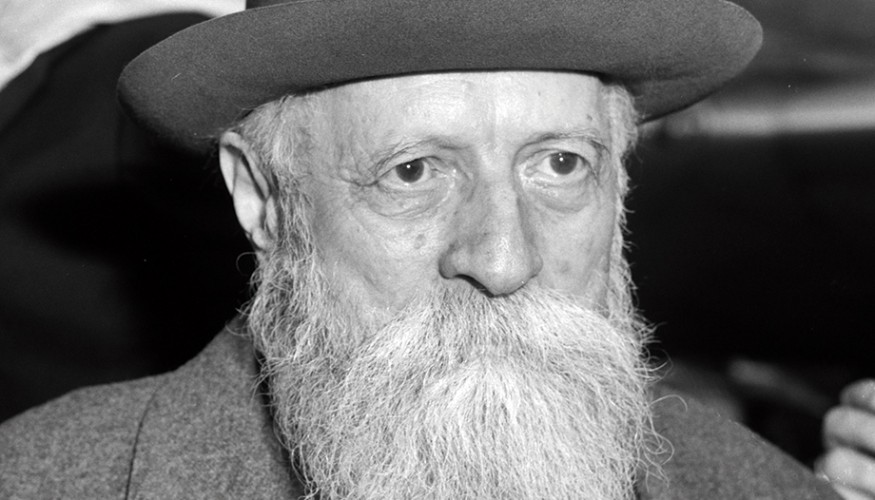
Sand did not wish to write a direct plea for the solution of one state for two peoples. But by re-establishing this lineage, which runs from Epstein to Tony Judt and Palestinian intellectuals including Edward Said, we suspect an, intellectually speaking, dishonest underlying maneuver, like a sleight of hand. It’s reminiscent of those who, to justify their anti-Zionism and rid themselves of the accusation of antisemitism that hangs over them, rightly or wrongly, see fit to point out that the first anti-Zionists were all Jews – from the defenders of emancipation to the Bundist revolutionaries, not forgetting the Orthodox rabbis and the liberal rabbis. And so, since yesterday’s anti-Zionists were Jews, and since Jews cannot be antisemites, anti-Zionists can in no way be antisemites. Impeccable, sophist reasoning that deliberately plays on the confusion between first-generation anti-Zionists and those of the current generation. The same applies to binationalists past and present. From Epstein to Scholem, from Buber to Bergmann, they were all Zionists and binationalists: their first conviction was not only compatible with the second; their binationalism stemmed from their very Zionism. Better still, their binationalism stemmed from a deep respect, even fascination, for Arab civilization. On the Jewish side, Israeli intellectuals, from Yehuda Schenhav to Michel Warschawski (who, surprisingly, is given only a footnote, even though he was one of the most valiant pioneers of this option when it was even more marginal), or Judt and Beinart, brandish an entirely different point of view. All of them advocate the binational solution not out of adherence to Zionism, like their elders, but out of repulsion for Zionism. Buber wanted to save Zionism from nationalism and eventual defeat; his pseudo-heirs seek to liquidate and bury it once and for all. There is an inherent contradiction in today’s binationalism, which affects not only the Jews who adhere to it, but also the Palestinians and the Europeans and Americans who support it. Binationalism, as its name suggests, recognizes that there are indeed two nations, equivalent in rights and legitimacy. But, from this perspective, who invented the Jewish ‘nation’ (or Jewish people) if not Zionism? Yet has anyone ever read or heard a current advocate of the bi-national state make amends and acknowledge that Zionism was right, that there is a Jewish nation of which it is the source? Since, according to the constructivist thesis reiterated by Sand in his book, it is states (and a state ideology) that make nations, not nations that make states.
What’s more, Sand sticks to his usual hobby: he insists that his demonstration that there was no exile after the destruction of the Second Temple is a revelation of unprecedented scope that overturns Jewish history and deprives Zionism of a key myth. By no means. Whether the Jews left Palestine, driven into exile by the triumphant Roman hordes or, more trivially, to try their luck elsewhere and escape Roman oppression, does not alter the shared conviction of the sine die gathering of the dispersed (not the “exiles”) and their return to the promised land. But while waiting for this distant day to arrive at the end of time, and while being required to do nothing to bring it about, a common consciousness inhabited all Jews until emancipation: born Jewish or converted, persecuted or prosperous, happy or unhappy, any land where Jews lived, whether they were born there or emigrated there, was perceived as a land of exile.
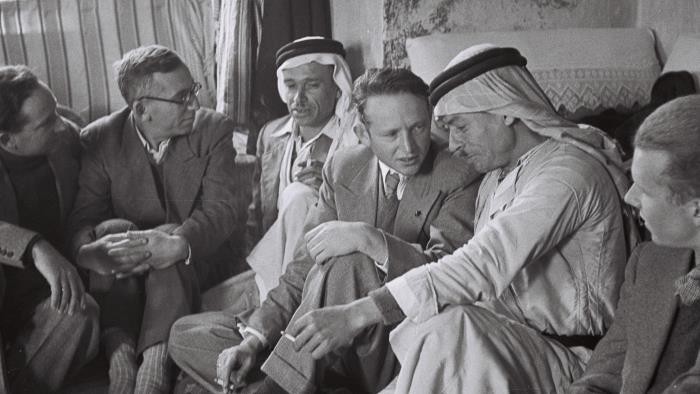
The same applies to race. Whether Zionists or non-Zionists have used the term here and there, it would have been surprising if they hadn’t adopted it as their own. But apart from the fact that this nominalism is anachronistic if we don’t go into the polysemous uses they made of it, the fact remains that in the famous Balfour Declaration, the most crucial document in the history of Zionism along with UN Resolution 181 of November 29, 1947, it was Balfour who, in the first version, had written “the Jewish race” in his own handwriting, and it was Weizmann, to whom the text had been submitted for approval, who returned the copy to its author, crossing out “the Jewish race” and substituting “the Jewish people”.
And to return to the binational solution, as advocated today, it is systematically presented as the antithesis of the two-state solution, further dividing and weakening the forces – so few on either side, especially since October 7 – of those who oppose the Palestinians and Israelis who call, in Arabic or Hebrew, for a Greater Palestine or a Greater Israel “from the river to the sea“. A binational state, were it to come into being, could only emerge after the success of two independent sovereign states which, strengthened by this cordial understanding, could then consider adopting confederal, and subsequently federal, mechanisms, with the consent of both peoples. All the rest is literature, or, more accurately, any other scenario for achieving a binational state can only be its Jewish supremacist counterfeit or its Palestinian supremacist counterfeit. Let there be controversy between supporters of peace, so be it. But why, in order to defend this binational model that he hopes will bring a bright future, does Sand feel the need to attack, not so much the two-state solution itself, but those who still support it, as if an ad hominem attack had ever been anything other than the weakest of rhetorical arguments?
Denis Charbit
Denis Charbit is Director of the Research Institute for Jewish-Christian-Muslim Relations and Professor of Political Science at The Open University of Israel (Raanana).
Notes
| 1 | French title: Deux peuples pour un État ? Relire l’histoire du sionisme; book not yet translated into English |
| 2 | Denis Charbit is the author of the anthology Sionismes Textes fondamentaux (Albin Michel, 1998), in which we find in extenso most of the texts by Ahad Ha’am, Yitzhak Epstein, Martin Buber and Shmuel Hugo Bergmann to which Shlomo Sand refers in his book and quotes extracts. |
| 3 | Yishuv is the Hebrew name given to the Jewish settlement established in Ottoman and British Palestine under the impetus of Zionism from the first Aliyah (1881) until the creation of the State of Israel. |


